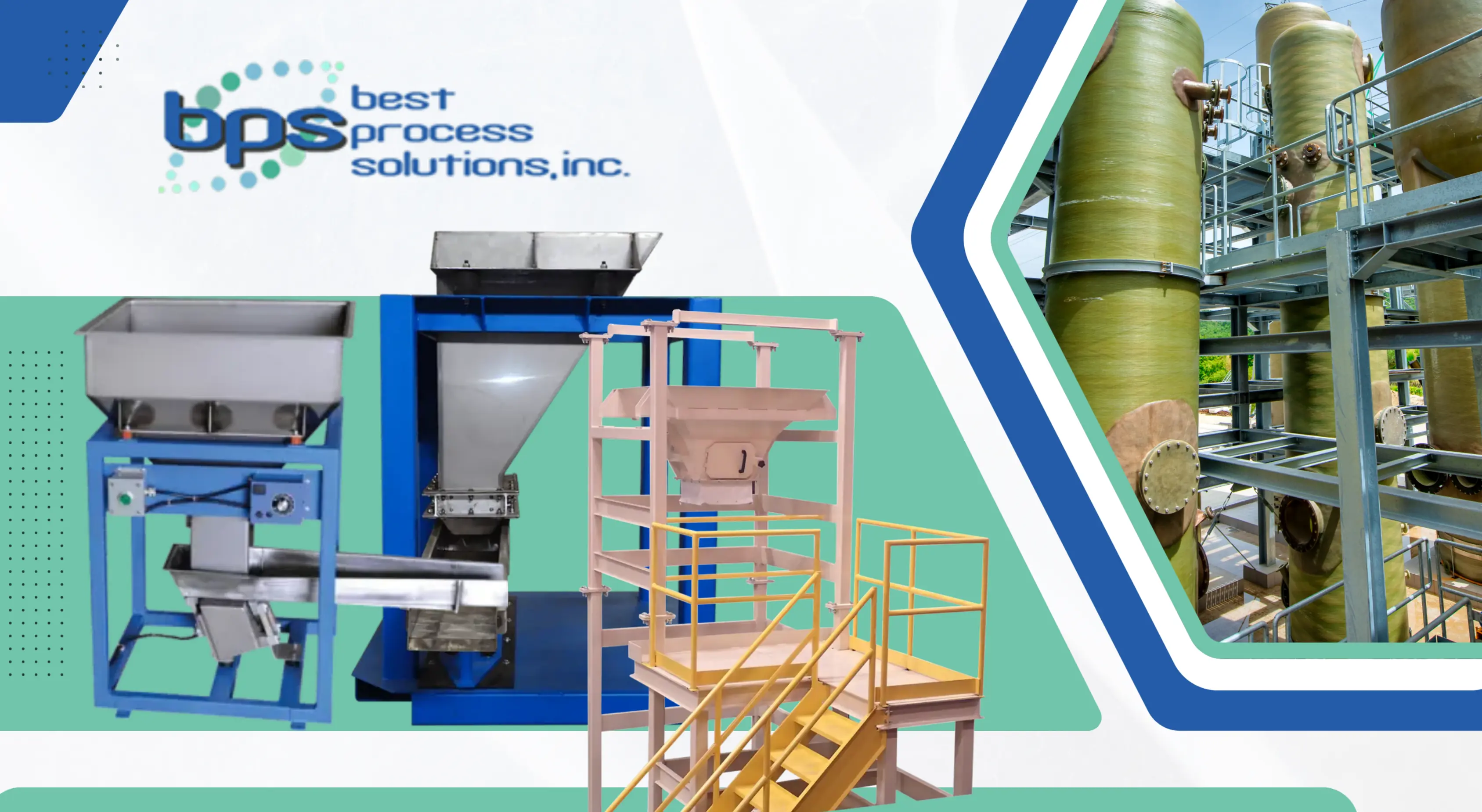0
Your cart is empty. Let's change that!
Shop our productsOops! Something went wrong while submitting the form.

Specialty chemical production is a high-stakes endeavor where precision, efficiency, and compliance are not merely desired but absolutely essential. Standard material handling equipment is often inadequate for specialty chemical production, leading to operational inefficiencies and difficulties in meeting strict compliance standards. BPS custom vibratory feeders are specifically designed to accommodate the unique material properties of specialty chemicals.
This article explores the challenges faced by specialty chemical producers and emphasizes the importance of custom feeders in enhancing operational efficiency. It also highlights the proven advantages of BPS's custom equipment. Furthermore, the article discusses how specialty chemical production frequently necessitates investments in specialized equipment such as automated equipment to ensure operational efficiency, regulatory compliance, and safety.
The production of specialty chemicals is a complex field that demands precise, safe, and reliable material handling processes due to the critical importance of safety and compliance with stringent regulations. Standard feeders often fail to meet the broad needs of producers, resulting in inefficiencies and potentially hazardous situations.
Best Process Solutions (BPS) addresses these challenges by offering customized solutions that enhance production efficiency, ensuring that the high standards required in regulated industries are consistently upheld while remaining compliant with frameworks such as OSHA Process Safety Management (29 CFR 1910.119) and, where applicable, FDA cGMP (21 CFR Part 211).
Custom feeders from BPS improve accuracy in material flow, leading to significant enhancements throughout the entire production process.
Specialty chemical producers encounter numerous challenges in their operations, particularly regarding material flow and handling issues, which can significantly disrupt production rates and efficiency.
These challenges are exacerbated by the need to comply with stringent environmental and safety regulations. The high costs associated with downtime and production variability can have serious financial repercussions, making reliable engineering solutions that optimize operations and mitigate risks a top priority.
Material flow and handling issues pose significant challenges for specialty chemical producers, as they can severely impact production efficiency and the precise metering of ingredients. Evaluating flowability and material characteristics is a crucial first step—bulk solids can bridge, rat-hole, or segregate depending on moisture, particle size, and density. See combustible dust and bulk solids incident lessons from the U.S. Chemical Safety Board: CSB Combustible Dust Safety.
Vibratory feeders are effective at mitigating ingredient flowability issues by providing a consistent flow of materials, stabilizing feed rates and improving homogeneity—key to quality and safety in processes covered by OSHA combustible dust guidance.
Producers must align with environmental statutes such as the Clean Air Act and the Clean Water Act, and with chemical management regimes like EU REACH. Electrically classified areas and explosive atmospheres call for ATEX/IECEx conformity (ATEX, IECEx) and U.S. requirements for hazardous (classified) locations.
Unplanned outages, rework, and schedule slips erode ROI. Building PSM elements (mechanical integrity, MOC, operator training) per AIChE CCPS best practices minimizes these risks and stabilizes throughput.
Custom vibratory feeders are essential because they match the unique material properties (abrasion, stickiness, cohesiveness, sensitivity to shear) and the hazard profile of specialty chemistries.
One-size-fits-all solutions struggle with variable bulk density and segregation. Custom feeders deliver:
Corrosive or abrasive streams demand suitable metallurgy and coatings. Standards and practices curated by the corrosion community (see AMPP/NACE standards) guide material selection for longer life and fewer interventions.
Custom designs incorporate sanitary/cleanable features, dust management, interlocks, and documentation that support audits across OSHA PSM, EPA permits, and, when applicable, FDA compliance manuals.
BPS provides a structured design process—requirements capture, modeling, prototyping, FAT/SAT—to address unique flow, containment, and accuracy needs. See our approach to custom equipment.